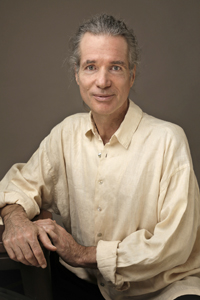The economic basis of musicians, dancers, concert organizers, venues, cafés, milongas, tango and salsa teachers and many more is being compromised by the worldwide measures to contain Covid19. These measures are lacking any sense of proportion and are destroying everything that has been built up over many years in many countries, especially by the self-employed and small and medium-sized entrepreneurs.
At the current time more and more scientists and doctors show the courage to express their doubts about the effectiveness of curfews and contact bans. They assess the danger of the measures taken as much greater than the danger posed by the virus itself.
We have a worldwide problem. That is why it is currently important to create a counter-public in every country in the world and to inform people about what is being concealed in the media. The website of Swiss Propaganda Research, which publishes its information in various languages and links to external information sites, is very helpful in this respect:
Deutsch
English
Francais
Espanol
Hungarian
Italiano
Dutch
Norwegian
Polish
Russian
The more intensively the SARS-CoV-2 virus is being studied, the clearer it becomes that it is supposed to be less dangerous than a normal influenza virus. We must break the spell under which the world (for whatever interests) is at the moment. Please forward the following information, which is not shown on television, to friends and acquaintances. So that we can continue dancing tango and salsa and live as self-determined a life as possible!

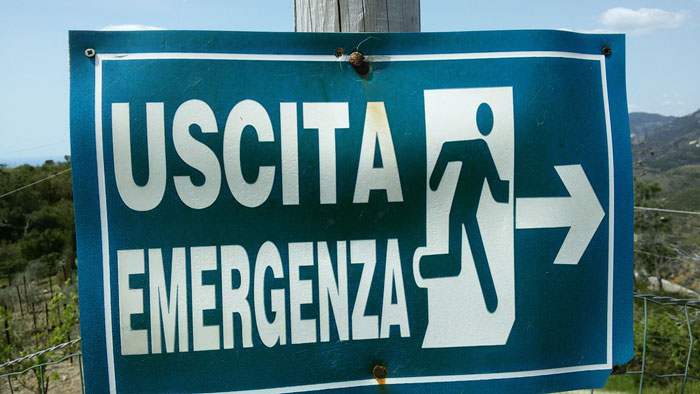
The following text are excerpts from original articles published in the blog of the German website „The Meditators“:
Since the beginning of this year I have been observing what is happening in the world in connection with the discovery of a micro-organism called SARS-CoV-2. New viruses appear every year and corona viruses have been known for many years. But this year was different. It had to be a really dangerous pathogen when the Chinese locked 60 million people into their homes for their own protection. I followed the development primarily through the renowned German news magazine „Der Spiegel“ and its online site. After all, until recently I believed that Der Spiegel was a more reliable source than many other media.
Further the virus spread around the world, the more my doubts about media coverage grew. After all, the virus did nothing other than what all influenza viruses do year after year - it went on a journey. SARS-CoV-2 has become the biggest viral media star of all time and will probably go down in history as a milestone for political, social and economic changes in this millennium that has just begun. The world is spellbound by SARS-CoV-2 and does not allow any other opinion on the subject than what is conveyed when we turn on the television or read the newspaper.
I know that it is risky to write what I am writing here. In the past few days I have experienced that many people in my environment, with whom I have been friends, despise me because I have a different opinion than they do. In their opinion, there is only one opinion on this subject. I would like to ask you to turn off the television, step aside, take a deep breath and check if what you think is not in a foreign-controlled mode. I am grateful for any factual information that supports or contradicts my thoughts and theses.
Hamburg
I live in Hamburg. This city has almost two million inhabitants. According to official figures from 19.03. there are 506 patients in this city, with SARS-CoV-2 was detected. On April 2, 2437 people were infected. This is far from the exponential curve that was predicted. Unfortunately I am not being told how many people are already well again.
On 19.03.2020 18 patients were being treated in the Hamburg hospitals, who couldn‘t cope with the consequences of corona flu at home alone;
a city of over a million people has been is shut down because of eighteen critical cases. On 02.04. there are 180 people with Covid19 in the Hospitals. Many doctors are out of work, because they are supposed to wait for the big wave of infections...
The specialist
Medical professionals on this topic: The flu occurs every year. Different viruses attack i.e. the respiratory system. In unfavourable conditions, pneumonia can also occur. Viruses are micro-organisms that, like all living things, have to adapt to circumstances. As humans are developing immunity the viruses adapt as well. Viruses create new variants that the human defence system does not yet know. Corona viruses have been known for many years. They have also accounted for a percentage of the viruses that cause flu-like infections for many years. This year, as in previous years. However, this is the first time that corona viruses and especially SARS-CoV-2 have been tested. Since today nobody was interested in these viruses. SARS-CoV-2 is therefore a completely normal procedure from a medical point of view - the same procedure as every year. But obviously it is not the same procedure because we see loads of coffins being transported from old peoples homes to the crematory. I believe this is a constructed reality.
Italy
Of course I have asked myself why the chaotic conditions in Italian hospitals are currently occurring. The way I see it , a whole range of factors are adding up to it;
The figures from Italy say nothing about how many people have died of Covid19 in that country. As Angelo Borelli, president of the Italian Civil Defence declared already on March 20th, there is no investigation in Italy whether someone died of Covid19. However, deceased people are being examined to see if they have the virus. If they do, they are included in the Covid19 statistics, even if the cause of death was completely different. (2)
Only about 12% of deaths are due to Covid19 , according to Prof. Ricciardi, scientific advisor to the Italian Ministry of Health. In other words, 88% of the deaths in Italy are people whose main cause of death is due to factors other than Covid19. So only a fraction of the deaths in Italy that appear in the statistics are due to Covid19. (3)
Italy has the second oldest population in the world after Japan. As early as 17th March a report by the Italian authorities revealed that 90% of the deceased counted as Covid19 were over 70 years old. In this report there are almost no deaths without pre-existing conditions, to be precise 0.8% of the deaths recorded in the Covid19 statistics have no pre-existing conditions. 99.2% have pre-existing conditions. (4)
The north of Italy has an extremely high level of air pollution. This results in a very high rate of respiratory diseases in this region. (5)
Italy has very high levels of antimicrobial resistance. This makes it difficult to use antibiotics on people who become infected by these resistant germs after hospitalisation and die as a result. (6)
The Italian health system has been in a completely dilapidated for years. It already collapsed during the last wave of influenza in 2018, when there were more than 25,000 influenca victims. But borders were not closed. There was also no curfew. (7a)
Also the average occupancy rate of the intensive care beds in the relatively well-equipped clinics in the north of Italy is 85 - 90% in the winter months. So it does not take much for a collapse. (8)
In Italy, staff shortages are part of everyday life in the health sector. However, if thousands of symptom-free health workers suddenly have to be quarantined because of positive Covid19 tests, even if they do not show any symptoms, the consequences are shattering.
The numbers of test positive individuals in Italy should be treated with caution.
9.1 In Italy, as in all other countries, tests are used that have not been scientifically validated. It is not known what else these tests (except for SARS-CoV-19) react to.
9.2 The figures on Covid19-infected people presented to the public do not indicate to what extent there has been an increase in positive test results due to an increase in the number of tests carried out. In other words, if you test twice as much today as yesterday, you will get twice as many infected people with the same infection rate.
9.3 Initial tests on a broad population group show that already in the first half of March the population in the region tested here is 50-75% symptom-free test positive for Covid19. This means: In the completely irresponsible presentation of figures by the media, everyone who dies from whatever cause from these 50-75% of people is considered to be Covid19 dead! (9)
(The sources of all details you can find below this post in German language.)

The numbers
In addition to images, we are supplied with figures by the media on a daily basis. Most of the figures are completely useless on closer inspection, as they contradict any scientific basis for collecting statistics. Numbers only make sense if there is a comparison. Corona numbers are almost always without comparison in the media. I would like to know how many deaths there have been in the comparative period of a country from the following diseases:
- the known variants of influenza
- Infections with resistant germs
- other diseases
- in traffic
- during previous years‘ flu epidemics
The current deaths attributed to corona flu are recorded in detail. With so much statistical effort, I also wonder why, especially in the first weeks of the spread, no further data is published regarding these deaths. Where were the statistics on the age and previous illnesses of the deceased?
I also ask myself,
- how many people become seriously ill when the virus is identified because of the fear that has been created around it. (It is scientifically proven that fearing a disease increases the chances of becoming ill oneself many times over).
- how many people become ill or die as a result of the governmental coercive measures taken in many countries
- how many freelancers and small entrepreneurs will get ill or even commit suicide because they are deprived of their income and have to watch their economic existence go down the drain.
An increase in domestic violence is now documented in Wuhan as well as in Italy.
The defensive measures
I take the issue of influenza (whether with or without SARS-CoV-2 in the virus cocktail) very seriously. For people with a weakened immune system or other diseases a flu can be fatal. This is the case this year and it was the same in previous years. All my life I have heard from doctor and scientists that one of the best ways to fight the flu and colds is to be out in the fresh air and exercise. Currently, government measures are preventing people from taking care of their health: in many countries they are not allowed to go for walks or exercise in the fresh air. Sports studios and all other health facilities are closed. Children are not even allowed on the playground. Parks are closed.
The experts
The Robert Koch Institute (RKI) is the highest institution in Germany for risk assessment in connection with epedemas such as a wave of influenza. Although the RKI emphasizes its independence, suspicions of close links with the pharmaceutical industry have been repeatedly voiced in the past. I have visited the website of the RKI several times in the past months, also when there were already quite a few corona cases in Germany. I was surprised to find no information at all about the new virus. This changed abruptly at a time when it became clear what economic potential there was for the pharmaceutical industry to combat the virus through vaccination. Suddenly the warnings from the RKI came thick and fast and contributed significantly to the current standstill in Germany. Before this point in time, SARS-CoV-2 seemed to be completely irrelevant to the RKI. This makes me think. However, I would not ask you to draw the conclusion from these observations that I believe that the pharmaceutical industry initiated the current disaster. I am definitely not of this opinion. But the pharmaceutical industry will do everything it can to cut itself off the cake. If you want to know more about this, please feel free to read up on topics like „swine flu“, „bird flu“ or BSE.
A few more thoughts
From one day to the next Wuhan did not report any new corona cases. China reports only a few new cases, all of them foreign travelers. In other words: In a country with 1.4 billion inhabitants the virus has suddenly disappeared! Here something else becomes clear: The virus only exists as long as it is in the spotlight (coronate tests). If we would stop testing in other countries, we would not even notice that this virus exists at all. This is the opinion of the German Respitory specialist Wolfgang Wodarg, among others.
Helpful for understanding the current situation is the reading of Naomi Klein‘s book „Die Schockstrategie“ (The Shock Strategy) published in 2007. What is analysed there in detail can currently be experienced in a new form.
The first winners of the crisis have already been determined. Besides pharmaceutical companies, they include Amazon, Facebook and the medical technology division of Alphabet, Google‘s parent company. In addition, there are many other companies whose business is in the field of surveillance capitalism. Further information on surveillance capitalism is provided by Shoshana Zuboff‘s book of the same name.
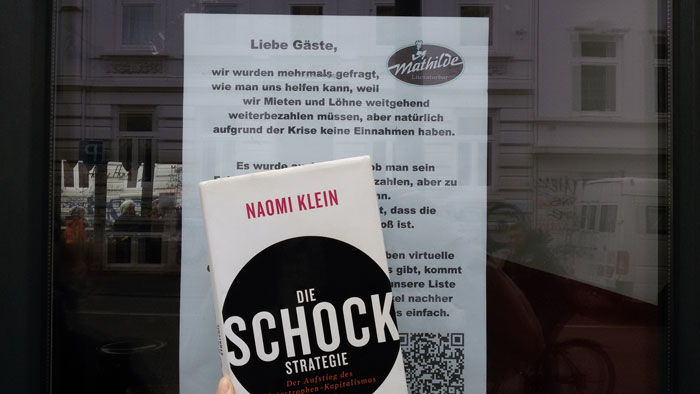
Become part of the counter-public
We now urgently need a stronger counter-public, which will help humanity to wake up from its paralysis. We also need more experts in all countries who dare to make their expertise available. For many freelancers and small companies it is already too late and I am concerned about the expected death rate through suicides and the expected social tensions, if the line taken by politics in almost all countries is continued. Fortunately, there are more and more experts who dare to oppose the mainstream opinion. However, these statements are hardly ever spread by the media. My full appreciation also goes to Wolfgang Wodarg, a medical doctor and specialist for respitory deseases and epidemiology from Flensburg, who concludes – based on the facts – that the course of Covid-19 is hardly different from a normal wave of influenza. All the contributions I have heard so far from experts who have been engaged by the media to make counterstatements have come to the conclusion that the facts listed by Wodarg are correct. What remains to justify the current measures is that we cannot yet say definitively whether SARS-CoV-2 would pose a particular threat because it is too early to do so. Does this argumentation justify even the slightest bit of action by governments worldwide? Let us be clear: Measures are being taken worldwide on the basis of the assessments and projections of a small group of virologists! Exponential growth rates result from more tests and more scare tactics. And the tests have not even been scientifically validated ...
Become part of the counter-public and spread the information which is suppressed in almost all media, over your personal networks. This is the only way for everyone to come to their own conclusions. If we are not intimidated, maybe we can save something ...
Your opinion
After the publication of the first articles in the blog of „Die Meditierer“, I received many many comments, most of them by mail. I am shocked how many people are already affected - not by the supposedly dangerous virus, but by the social consequences. The number of those who think I am mentally ill and my posts are dangerous to the public is limited. Thanks to all who are in the process of creating a counter-public! If you would like to write a comment below, please concentrate on a statement with factual additional information. Of course these do not have to share my opinion. But references to films showing coffins piled up in front of a crematorium fail to recognize that television is staging its contributions. I have worked long enough in this medium myself.
Further contributions, additions and regular updates can be found (in German language) on the website of „Die Meditierer“.
All facts mentioned in the articles are based on carefully researched sources. You can find the sources under the original contributions of „The Corona Hypnosis“, „Corona - the Media“ and „More Tests - more sick - more panic - more dead“ in German language.
The websites linked for information purposes do not reflect the opinion of the operator of this blog.





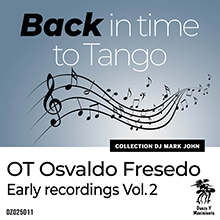


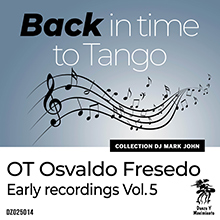









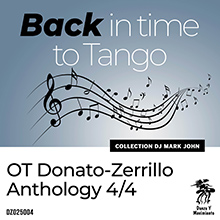





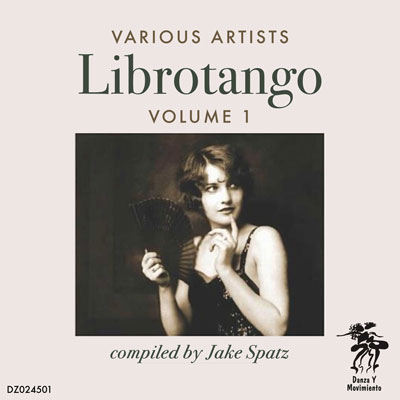
















 El Hierro is located in the middle of the Atlantic Ocean and the seventh and smallest of the main Canary Islands. Here, a project is currently being created for retreat and reflection, to breathe deeply and get in touch with nature. The island is sparsely populated, has no international airport and no wide sandy beaches. These are ideal conditions for people who want to take some time out, especially in this day and age. Our time needs people who are willing to stop and contemplate ...
El Hierro is located in the middle of the Atlantic Ocean and the seventh and smallest of the main Canary Islands. Here, a project is currently being created for retreat and reflection, to breathe deeply and get in touch with nature. The island is sparsely populated, has no international airport and no wide sandy beaches. These are ideal conditions for people who want to take some time out, especially in this day and age. Our time needs people who are willing to stop and contemplate ...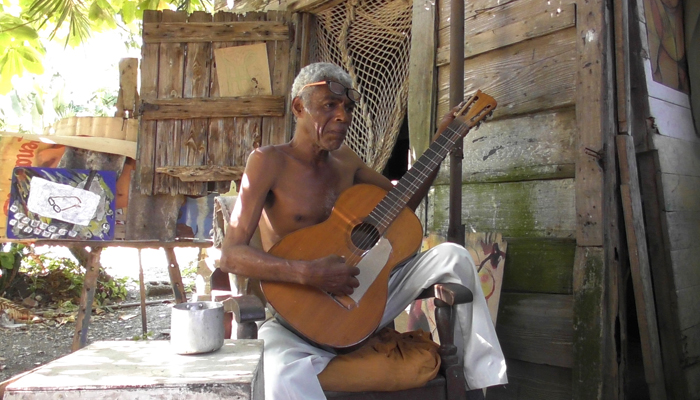




 A tango dancer has sent me her thoughts with request for publication:
A tango dancer has sent me her thoughts with request for publication:


 Shortly after the turn of the millennium I released the last self-produced CD on my label. In 2007 I released the last album, where the musician had financed the recording himself. I closed my shop in Hamburg at that time, I stopped the internet trade with music later as well.
Shortly after the turn of the millennium I released the last self-produced CD on my label. In 2007 I released the last album, where the musician had financed the recording himself. I closed my shop in Hamburg at that time, I stopped the internet trade with music later as well.



 This is an insider tip to end the summer in a special way in the mountains of Italy this year. Book your individual stay during the period from 28 August to 27 September 2018 now!
This is an insider tip to end the summer in a special way in the mountains of Italy this year. Book your individual stay during the period from 28 August to 27 September 2018 now! Between August 28 and September 27 we have opened the space for people who want to spend time in this beautiful location. Minimum stay is 5 nights.The daily price of 110 euros includes your overnight stay in a shared room, full board and participation in a daily recreational programme.
Between August 28 and September 27 we have opened the space for people who want to spend time in this beautiful location. Minimum stay is 5 nights.The daily price of 110 euros includes your overnight stay in a shared room, full board and participation in a daily recreational programme. practice or for practicing Qi Gong, Tai Chi or movement meditations for you alone or with others.
practice or for practicing Qi Gong, Tai Chi or movement meditations for you alone or with others.